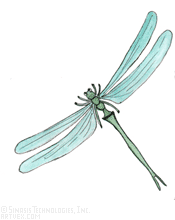I love to chew gum. I've been known, on several occasions, to chew it until my jaw is aching. Gum is sweet, tasty and adds a little boost to my self-esteem when I'm feeling especially clumsy. How so? Well, I might be tripping over, running into and dropping things all day, but give me a piece of gum, and I'm reassured that things aren't so bad. Hey, at least I'm still able to walk and chew gum at the same time!
Traveling in Greece last year, I stayed on the island of Chios. Chios is famous for it's mastic trees, and the products produced from mastic tree resin. Mastic gum is said to be the earliest of gums, and I've tried several different varieties. I loved them all, but I realize that not everyone else I know feels the same way. While I tried orange and lemon flavors, the traditional flavor of mastic gum essentially tastes like tree sap. This was no problem for me because, as a child, I loved the taste of tree sap. I would look around for and would find sap that had dripped down the sides of trees and dried a bit. I would scrape this sap off and chew it like gum. I wonder if this is the same way the original mastic gums were first created? Did a curious child scrape off some tree sap and then say (in Greek, of course) "Here, Dad! Here, Mom! Try this! It's cool!"
In college, I spent a semester studying abroad in Singapore. Singapore is well known to have outlawed the sale of gum. (Although this was modified in 2004) Why the ban? The reason I was given was that the government became fed up with the mass amount of gum that was littered everywhere. This fits in with the steep littering fines also to be found in Singapore. As far as the gum littering problem, gum stuck on the doors of elevators and metro trains was said to have slowed down people getting around the city, particularly making people late for work. This was said to be a major problem in a city where car ownership and usage is outrageously expensive, and most of the population must depend on various forms of public transit.
I don't known how accurate this reason for the anti-gum law really was. Also, I don't know how much gum usage was really reduced by this ban. I witnessed first-hand that gum can easily be purchased in nearby Malaysia and brought into Singapore by individuals wanting to stock up and share with friends and family members. My dorm at the National University was filled with this contraband. So, while I couldn't buy gum when I was actually in Singapore (unless I took a short city bus to/from Malaysia), I found it easily available for chewing. This was fortunate since I wasn't fond of the idea of giving up my gum chewing habit.
Thinking about the sale of gum in Singapore reminds me that, without gum on the shelves, it did seem as if Singapore had more mints available. I noticed that there were especially a lot of Mentos candies to be found in the in the markets, much more than I normally see on the shelves of a typical grocery store in the United States. To put this in perspective, though, keep in mind that Singapore is a small country, and Americans actually buy more Mentos each year than any other country (according to the company website). Nevertheless, I have a conspiracy theory that the Singaporean government and a conglomerate of mint makers, including the Mentos company, created the anti-gum law as a marketing scheme to sell more mints in Singapore. Somehow, I don't think this theory will catch on as much as conspiracy theories such as "Who Shot J.F.K.?" and "What's really at Area 51?", but you never know...
For more information:
Here's a Wikipedia article on "Chewing Gum" that I found interesting: http://en.wikipedia.org/wiki/Chewing_gum
Here's a link to the official website for Mentos (This could be especially helpful in exploring my conspiracy theory): http://www.mentos.com
And, last but not least, here is a YouTube video created for the Discovery channel on the making of bubble gum.
Until I type again,
Kami
Subscribe to:
Post Comments (Atom)








No comments:
Post a Comment